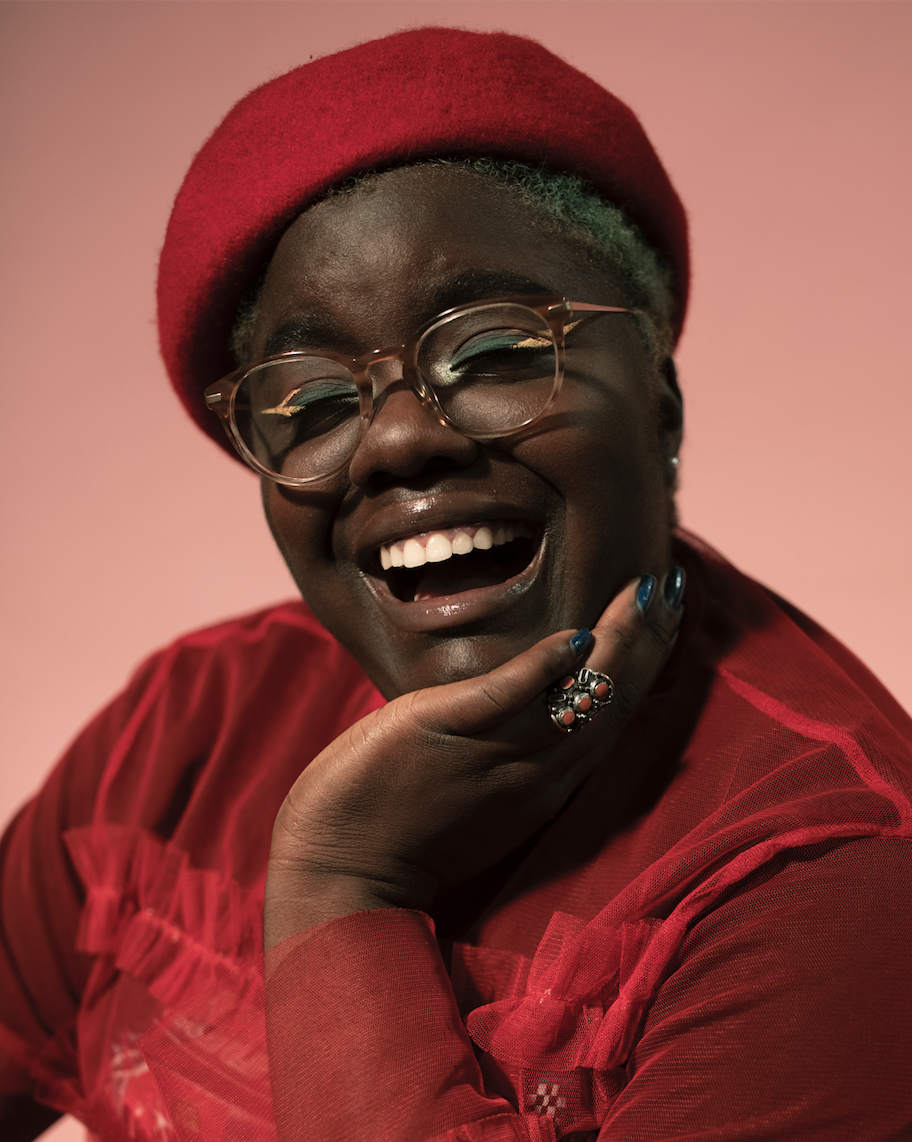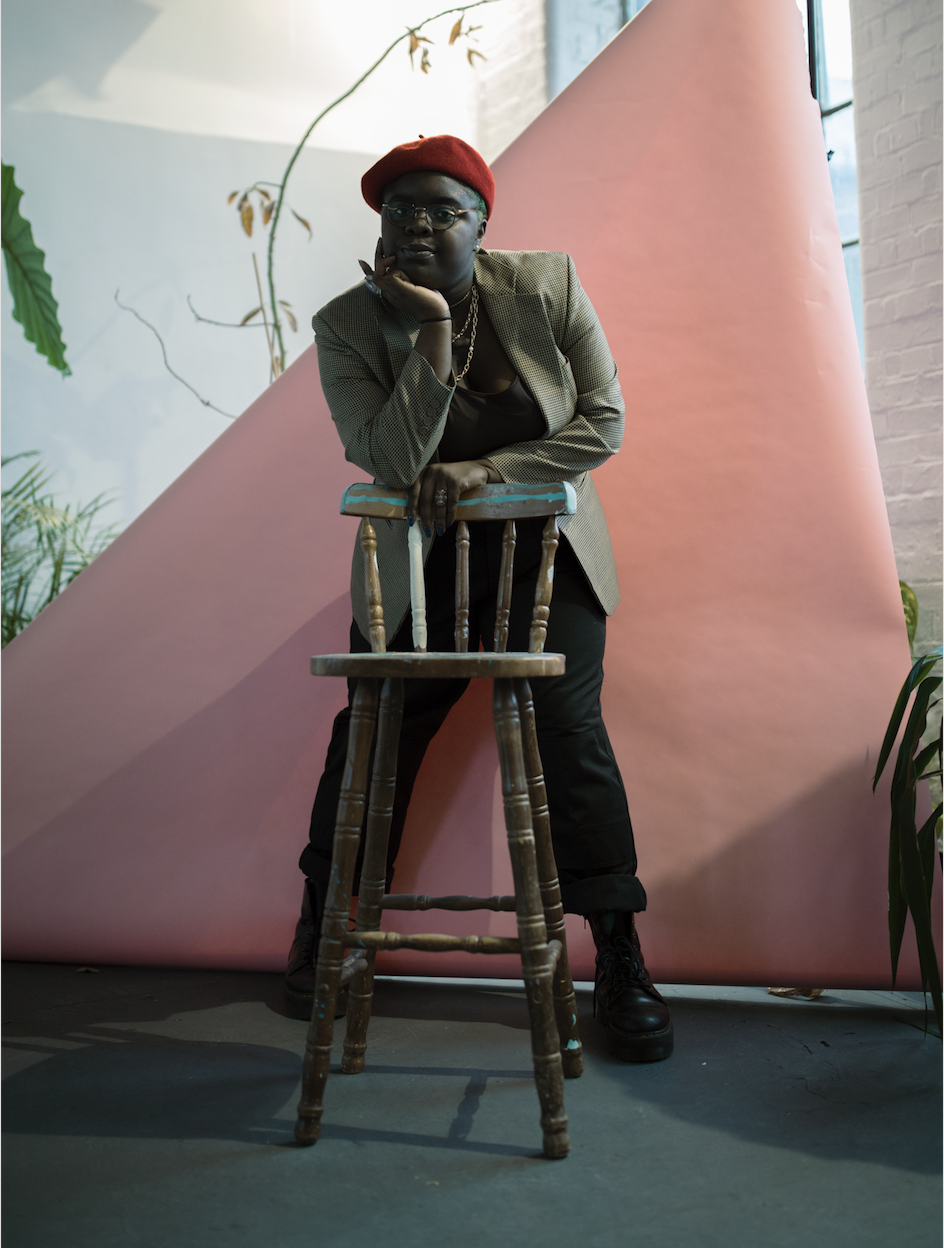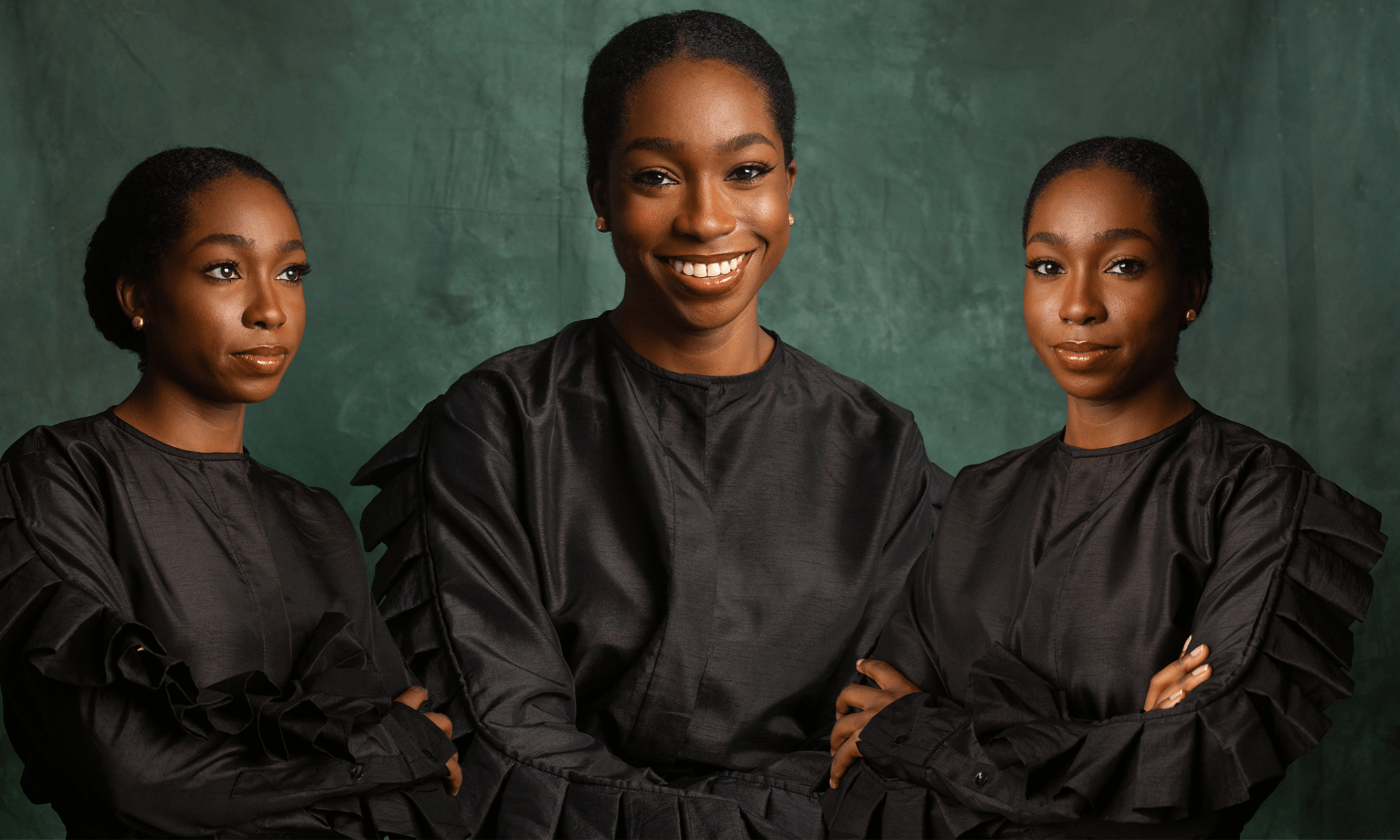
Seeing in colour: an interview with illustrator Catherine Morton-Abuah
Charlie Brinkhurst Cuff
08 Nov 2018
All photography by Kez Coo (above, Catherine wears Franck in Sunset)
Catherine Morton-Abuah is colourful in the most literal sense of the word. From her snake-green hair to the bright splashes of yellow, red, pink, blue and everything in between that mark out her people-focused paintings and illustrations, Catherine will light up your world with her optimism but equally isn’t afraid to get political if the occasion calls for it. The artist and illustrator, who has recently moved back to London after a stint at Leeds Arts University, is best known for representing the essence of people of colour in a diverse and dynamic way, and her work for organisations like gal-dem, Yellowzine and Afropunk explores mental health, memories and body positivity. Here, she speaks about her teenage love of One Direction, what it was like going to university in the north of England and why drawing comics about food is one of the best ways to calm her anxiety.
How would you describe yourself to someone who doesn’t know you?
I would describe myself as a joker and definitely a daydreamer. I don’t like to take things too seriously but I’m contradictory – because I kind of do. I’m really clumsy and drawn to colours and different palettes. Because of my work, I love to clash colours and learn about how they complement each other. That seeps into how I dress. My hair is green right now. Maybe a week and a half ago it was my natural colour but I’d look in the mirror and be like, “Ugh, who is she? We need to sort this out!”
I would also say that I’m an optimist. Over this past year, I’ve been through a lot. Ever since I was a young teenager, I’ve known that I suffer from depression and anxiety but it’s only now that I’m 21 that I feel more open to speak on it and get help. I’m trying to get rid of the stigma around talking about mental health, especially within black communities. Thankfully, even when I’m in a low place, 10% of me knows that there’s light at the end of the tunnel.
What do you think of the phrase “I don’t see colour”?
It reminds me of the space I was in at Leeds Arts University, which was predominantly white. When race did come into the conversation, the white people around me would get a bit shook. I could imagine them saying, “Oh I don’t see colour” to take the heat off them, rather than actually trying to open up a conversation about race. Saying you don’t see colour is like saying you’re some higher being who lives in a world without prejudice. A lot of us go through so much because of the colour of our skin so to say that you don’t see it is very invalidating. It’s so much more difficult for us to navigate certain institutions and just in society in general.
Catherine wears Damien in Hazelnut Tortoise
How does your art inform the way that you interact with people? Are you looking for art in your everyday interactions?
My mind doesn’t shut up. It’s like, “Do you remember that time when you were five years old and you went to the park and ate ice cream?” and then I’m thinking about colours and summer and how I can convey this in a comic. And then suddenly it’s a t-shirt idea. It’s a never-ending cycle. Within the past year, I’ve found a lot of inspiration and friendships within the queer people of colour scene. Say with Pxssy Palace or BBZ or even gal-dem SUGAR club nights. When I’m creating posters for that, I’m thinking about how I feel at a SUGAR night, trying to convey the scenes of beautiful people of colour dancing and having a good time. If I’m having an anxious day, I might draw a comic about cooking. I really like cooking and preparing vegetables. Making a recent comic on prepping made me feel more at peace because I began to think about how I am when I am in the kitchen.
Did you ever go through a time when you only drew white people?
When I was about 16, I was really into One Direction. I drew Harry Styles all the time. I got a foundation place out of it; in my portfolio, there were pictures of Harry Styles and they’d be like, “Oh wow this is great!” One day I was doing a painting and my dad said, “Why are you drawing him again? Why do you always draw white people? Why don’t you draw a black person?” And then jokingly he added, “Why don’t draw me?” He always makes funny comments but this one really hit me. It made me realise that I shouldn’t spend the rest of my life drawing this white dude. At that time I was becoming more conscious about the Black Lives Matter movement and realising that the UK itself is inherently racist. As soon as I started to love myself, it translated into my work.
Your work has certainly developed since the One Direction days!
When I was on my illustration course, people drew skinny pixie fairy girls with a triangle for a nose and I was like, “Come on! What are you doing? You literally have the gift of drawing and yet you’re drawing the same person again and again when you could draw an array of people of different shapes, sizes, colours, genders, religions.” There are so many ways to draw an afro or lips or teeth. Any time I work, I’m approaching drawing in a new way. One minute I could do/draw something very shape-oriented and the line is very crisp, and another time I could just let my hands shake a little bit to get a difference in line. Everything informs my work. I feel like that’s what excites and pushes me to do more. I’m not trying to speak for my community – I’m saying what I have to say and, in doing that, hoping that it resonates with more people.
This interview has been edited for length and clarity
This article has been produced in partnership with Ace and Tate as part of our “seeing in colour” series to mark the launch of their AW18 collection. How often do we hear people tell us that they don’t see colour’? Well, we do and so do our four interviewees – identity is at the heart of their work and this article series will explore the wonderful things that they are doing to push for better representation through arts, politics and culture.










